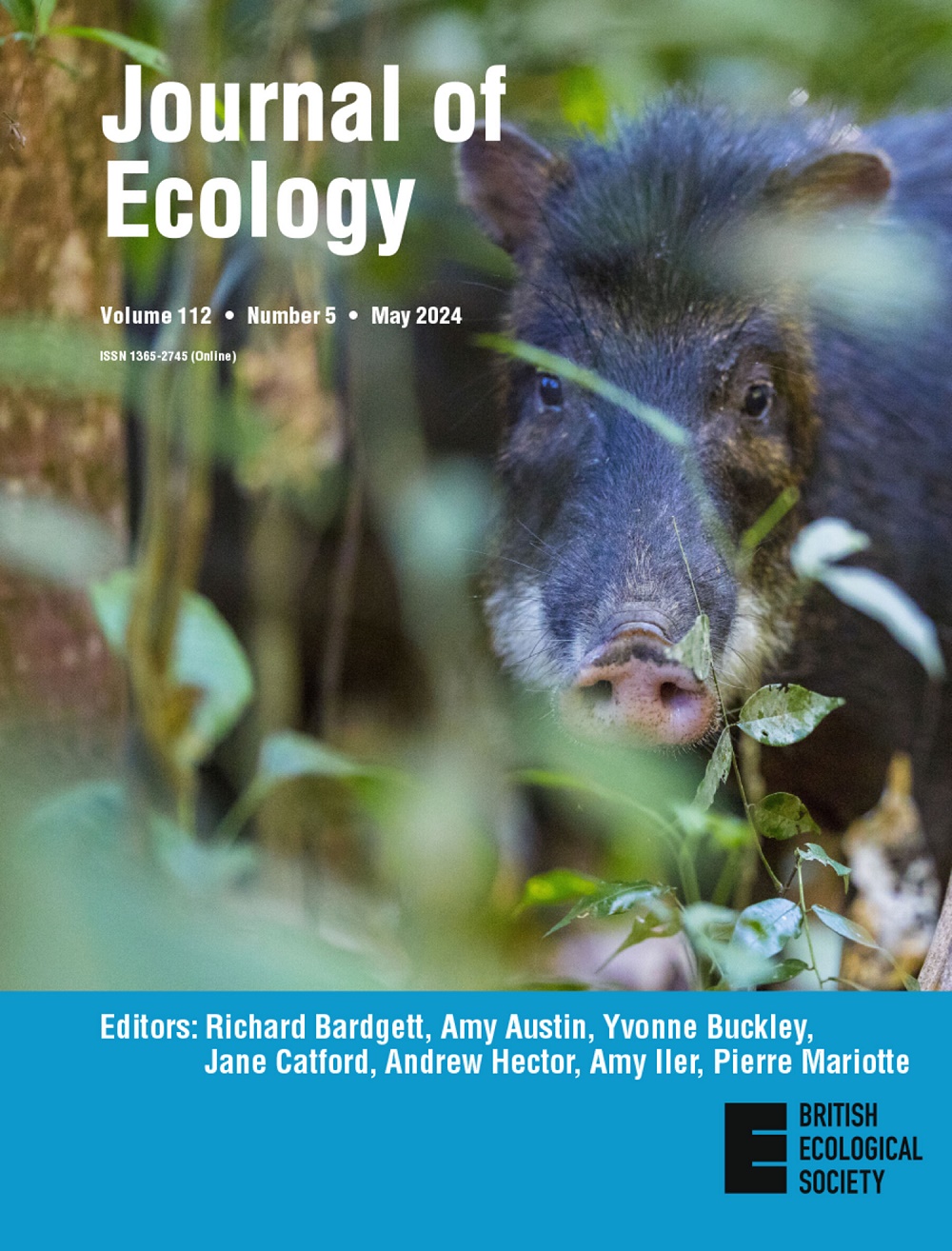在中欧有管理的温带森林中,茎干内部腐烂不是碳储量估算误差的主要来源
IF 5.6
1区 环境科学与生态学
Q1 ECOLOGY
引用次数: 0
摘要
森林生物量和碳储量估算对于了解全球碳循环和森林生态系统在气候变化方面的减缓潜力至关重要。森林生物量通常使用异速生长生物量函数进行评估,该函数依赖于茎径和树高数据,因此依赖于树木的外部形状。在这些计算中忽略了树干内部腐烂和树洞。在一项全球调查中,假设1%最大的树木包含森林林分50%的地上树木生物量。这一假设赋予了最大的树木在整个林分生物量中的突出作用。这也意味着在确定这些单株树木生物量时的估计误差将对林分生物量产生重大影响。同时,最大和最老的树木内部木材腐烂的风险增加,这反过来又增加了利用异速生物量函数高估林分生物量的可能性。研究了德国西南部温带森林中柴(Fagus sylvatica)、冷杉(Abies alba)、云杉(Picea Abies)和西尔松(Pinus sylvestris)的地上生物量和碳储量,选取了168个样地,共有树木2359棵,其中大型古树比例异常高。我们基于异速生长回归函数计算生物量,并用声波断层扫描获得的茎内衰变数据对结果进行校正。在所研究的树种中,18%-25%的最大乔木占地上生物量的50%,远远超过1%的最大乔木。由于树干内部腐烂导致的地上林分生物量和碳储量密度高估仅占林分水平的0.2%-0.3%,因此与其他与生物量和碳储量估算相关的潜在误差来源相比,可以忽略不计。异速生长生物量函数可用于中欧温带管理森林的生物量和碳储量估算,即使在大型古树占比很高的林分中也是如此。应该检验这一结论是否适用于其他区域和生物群落中较少或没有集约管理的森林。本文章由计算机程序翻译,如有差异,请以英文原文为准。




Internal stem decay is not a major source of error for carbon stock estimates in managed temperate forests of Central Europe
求助全文
通过发布文献求助,成功后即可免费获取论文全文。
去求助
来源期刊

Journal of Ecology
环境科学-生态学
CiteScore
10.90
自引率
5.50%
发文量
207
审稿时长
3.0 months
期刊介绍:
Journal of Ecology publishes original research papers on all aspects of the ecology of plants (including algae), in both aquatic and terrestrial ecosystems. We do not publish papers concerned solely with cultivated plants and agricultural ecosystems. Studies of plant communities, populations or individual species are accepted, as well as studies of the interactions between plants and animals, fungi or bacteria, providing they focus on the ecology of the plants.
We aim to bring important work using any ecological approach (including molecular techniques) to a wide international audience and therefore only publish papers with strong and ecological messages that advance our understanding of ecological principles.
 求助内容:
求助内容: 应助结果提醒方式:
应助结果提醒方式:


